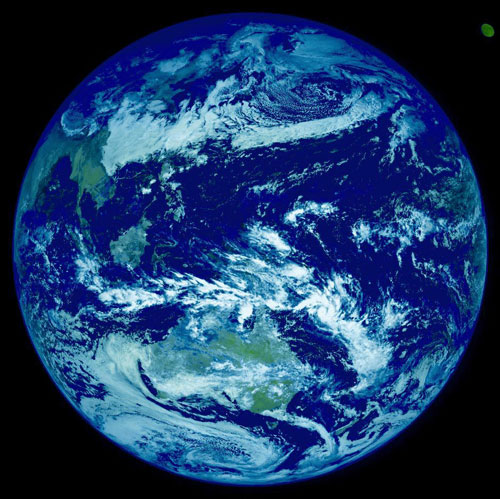Country: Things you don't know
If we consider protein to be a specific substance of life, water is an indispensable environment for life to function.

Water is everywhere. Scientific studies show that on the surface of the Earth there are 1,385,920,456.9 kilometers of water. However, only less than 1% of these are clean and accessible water.
" Clean " water may be just a relative term. Before 2009, US federal regulators did not even demand to force bottled water producers to eliminate E. coli bacteria.
In theory, water in the stratosphere contributes to the current warming of the earth's atmosphere. This may increase the severity of tropical storms, which will add more water to the stratosphere.
The warming speed of the slower earth atmosphere in the past decade may be due to a 10% reduction in water in the stratosphere. Until now, scientists are still unclear why.

Scientists have discovered large reservoirs in the ocean floor. In fact, there may be more water under the oceans than in them.
Without water, the oceanic crust will not sink into the earth's crust. And of course, the earth may not have a tectonic construct, and our planet may be more like Venus: terrible and stagnant.
Recent evidence suggests that when the solar system was formed 4.5 billion years ago, comets have liquid cores. If so, life may have begun in a comet.
Ice is a network of tetrahedral molecules bound together and contains a lot of gaps. That's why ice floats. Even after the ice melted, some of these tetrahedrons were almost always left, like a small piece of ice with a width of 100 molecules.
You can create water by mixing hydrogen and oxygen in a container and adding a spark. Unfortunately, it was the formula that led to the 1937 Hindenburg balloon explosion , killing 34 people.
Scientists have found a less explosive formula to extract energy from hydrogen and oxygen. Eliminating electrons from some hydrogen molecules, adding lots of electrons to oxygen molecules and as a result, we get an electric current. That's what happens in a fuel cell.
Good gardeners know well, don't water your plants during the day. Water droplets clinging to the leaves can act as a small magnifying glass, concentrating sunlight and causing the tree to burn.
The hair on your skin can also hold water droplets . An unshaven hairline may burn more quickly than a shaved leg.
We can fast for more than a month but cannot keep thirsty for only a few days. Simply, water is an essential resource for life. They play an important role in transporting oxygen and nutrients throughout the body. In addition, water is a special type of 'lubricant', which helps to lose and make joints more flexible.

Although many doctors often advise patients to drink 8 glasses of water a day , there is no scientific evidence to support this advice. This myth may stem from a 1945 recommendation that Americans should consume about " 1 ml of water per food calories ", equivalent to 8 or 10 glasses of water per day. But the recommendation added that most of the water should be absorbed from food - something that many people seem to have missed.
Drinking too much water or more than necessary can cause "water poisoning" and lead to edema of the brain and lungs, causing death. Many amateur marathon runners have died in this way.
Conversely, when the body lacks water, dehydration will occur . Some of the most visible mild signs of itching and dry skin, fatigue. More seriously, you still feel less concentrated, headaches, dizziness . Long-term dehydration can affect blood pressure, blood circulation, digestive system and kidney functions.
An information that may shock many people: The new water recovery system on the International Space Station (ISS) is recycling 93% of astronauts' sweat and urine and turning them into drinkable water. .
The Kurdish villages of northern Iraq are currently using a mobile version of the water treatment system of the US Space Agency (NASA) to clean water from rivers and streams.
- 10 unique things only available in Finland
- 18 interesting facts about Japan
- Little known things about the most flat country in the world
- 9 remarkable things about Iraq
- Things are only available in Italy
- 5 unexpected little things about Saudi Arabia
- 6 little-known things about FaceBook
- The most interesting things about the country of Curacao that you do not know
- Things you didn't know about Bahrain kingdom
- Bad things always remember longer than good
- 16 weird facts about Germany
- Interesting things about Japan
 Green tea cleans teeth better than mouthwash?
Green tea cleans teeth better than mouthwash? Death kiss: This is why you should not let anyone kiss your baby's lips
Death kiss: This is why you should not let anyone kiss your baby's lips What is salmonellosis?
What is salmonellosis? Caution should be exercised when using aloe vera through eating and drinking
Caution should be exercised when using aloe vera through eating and drinking